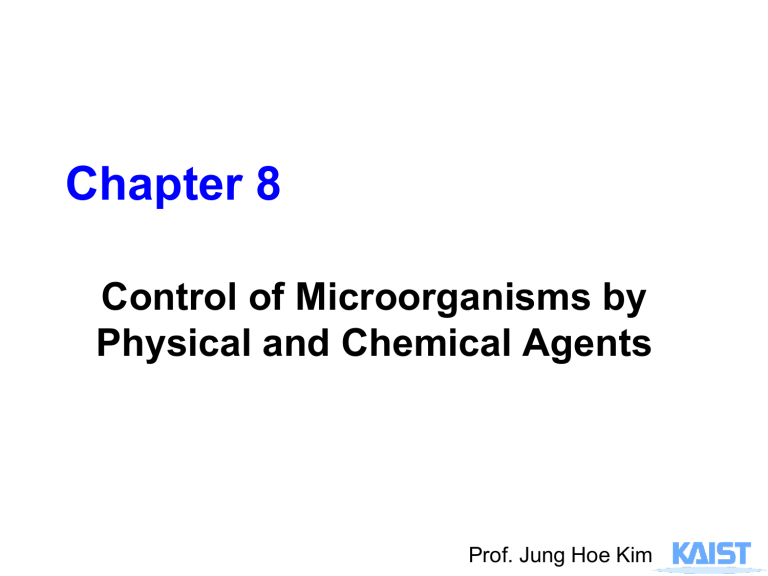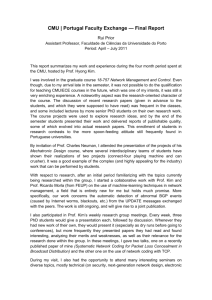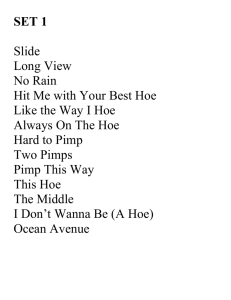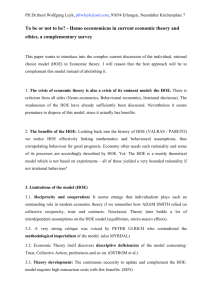Chapter 7
advertisement

Chapter 8 Control of Microorganisms by Physical and Chemical Agents Prof. Jung Hoe Kim Why control the microbial activity? • Prevention from : Food spoilage and Contamination Longer preservation of food and substances • Pathogen and their transmission • Protection of disease • In recorded history - Egyptian used fire to sterilize infectious materials - Hebrews burned any clothing suspected of being contaminated with Leprosy bacteria Prof. Jung Hoe Kim Definition of Frequently Used Terms • • • • Sterilization (멸균, 살균) – destruction or removal of all viable organisms Disinfection (소독 ) – killing, inhibition, or removal of pathogenic organisms – Disinfectants (소독약) • agents, usually chemical, used for disinfection • usually used on inanimate objects Sanitization (위생처리) – reduction of microbial population to levels deemed safe (based on public health standards) Antisepsis (방부 ) – prevention of infection of living tissue by microorganisms – Antiseptics (방부제) • chemical agents that kill or inhibit growth of microorganisms when applied to tissue Prof. Jung Hoe Kim Antimicrobial agents (항미생물제) • • • Agents that kill microorganisms or inhibit their growth -cidal agents: kill microorganism -static agents: inhibit growth -cidal agents (살균제) -cide – suffix indicating that agent kills • Germicide (살균제) – kills pathogens and many nonpathogens but not necessarily endospores • Include bactericides, fungicides, algicides, and viricides -static agents (정균제) -static – suffix indicating that agent inhibits growth – include bacteriostatic and fungistatic Prof. Jung Hoe Kim The Pattern of Microbial Death • Microorganisms are not killed instantly • Population death usually occurs exponentially Prof. Jung Hoe Kim Heat-killing experiment dN dt = kdN Nt = N0 ·e-kdt N : viable cell No. Kd : death rate constant lnN0 - lnNt t= kd Prof. Jung Hoe Kim Factors Influencing the Effectiveness of Antimicrobial Agent Activity 1. Population size :larger populations take longer to kill than smaller populations 2. Population composition :microorganisms differ markedly in their sensitivity to antimicrobial agents 3. Usually higher concentrations or intensities of agents kill more rapidly 4. Duration of exposure: longer exposure kills more organisms 5. Temperature: higher temperatures usually increase amount of killing Prof. Jung Hoe Kim Methods of Microbial Control - Physical Method - Chemical Method - Biological Method : use of antibiotics produced by microorganisms Prof. Jung Hoe Kim The Use of Physical Methods in Control • • • • Heat (열처리) Low temperatures (저온) Filtration (여과) Radiation (방사선) Prof. Jung Hoe Kim Heat • Moist heat (ex; autoclave,고온살균법) – effective against all types of microorganisms – degrades nucleic acids, denatures proteins, and disrupts membranes • Dry heat sterilization ( oven ) – less effective, requiring higher temperatures and longer exposure times – oxidizes cell constituents and denatures proteins Prof. Jung Hoe Kim Measuring heat-killing efficiency • Thermal death time (TDT) – shortest time needed to kill all microorganisms in a suspension at a specific temperature and under defined conditions • Decimal reduction time (D or D value) – time required to kill 90% of microorganisms or spores in a sample at a specific temperature Prof. Jung Hoe Kim Other measures… • Z value – increase in temperature required to reduce D by 1/10 • F value – time in minutes at a specific temperature needed to kill a population of cells or spores Moist heat Autoclaves : 15min at 121ºC – used to kill endospores efficiently – use saturated steam under pressure 1atm, 121ºC Prof. Jung Hoe Kim Pasteurization – Observed change of wine flavor caused by microbial formation of lactic and acetic acids – Controlled heating at temperatures below boiling, 60-70 ºC – Reduces then total microbial population and thereby increases shelf life of treated material – Minimizes destruction of nutrients in milk processing (specially heat sensitive vitamines) Prof. Jung Hoe Kim Pasteurization of milk • Flash pasteurization (high temperature shortterm – HTST) – 72°C for 15 seconds then rapid cooling • Ultrahigh-temperature (UHT) sterilization – 140 to 150°C for 1 to 3 seconds Prof. Jung Hoe Kim Low Temperatures • Freezing – stops microbial reproduction due to lack of liquid water – some microorganisms killed by ice crystal disruption of cell membranes • Refrigeration – slows microbial growth and reproduction Prof. Jung Hoe Kim Filtration • Reduces microbial population or sterilizes solutions of heat-sensitive materials by removing microorganisms • Also used to reduce microbial populations in air Prof. Jung Hoe Kim Filtering liquids • Depth filters – thick fibrous or granular filters that remove microorganisms by physical screening, entrapment, and/or adsorption • Membrane filters (size exclusion) – porous membranes with defined pore sizes that remove microorganisms primarily by physical screening Prof. Jung Hoe Kim Membrane filter outfit for sterilizing medium volumes of solution; cross section shows use of several filters to increase capacity Prof. Jung Hoe Kim nylon membrane with bacterial removal rating of 0.2 μm polycarbonate membrane with 0.4 μm pores Prof. Jung Hoe Kim Filtering air • Surgical masks • Cotton plugs on culture vessels • High-efficiency particulate air (HEPA) filters – used in laminar flow biological safety cabinets (clean bench) laminar flow biological safety cabinet Prof. Jung Hoe Kim Prof. Jung Hoe Kim Radiation • Ultraviolet (UV) radiation – limited to surface sterilization because UV radiation does not penetrate glass, dirt films, water, and other substances • Ionizing (γ-ray from Co 60) radiation – penetrates deep into objects – destroys bacterial endospores; not always effective against viruses – used for sterilization and pasteurization of antibiotics, hormones, sutures, plastic disposable supplies, and food Prof. Jung Hoe Kim The Use of Chemical Agents in Control Prof. Jung Hoe Kim Phenolics • Commonly used as laboratory and hospital disinfectants • Act by denaturing proteins and disrupting cell membranes • Tuberculocidal, effective in presence of organic material, and long lasting • Disagreeable odor and can cause skin irritation Prof. Jung Hoe Kim Alcohols • Bactericidal, fungicidal, but not sporicidal • Inactivate some viruses • Denature proteins and possibly dissolve membrane lipids Prof. Jung Hoe Kim Halogens • e.g., iodine – skin antiseptic – oxidizes cell constituents and iodinates proteins – at high concentrations may kill spores – skin damage, staining, and allergies can be a problem – iodophore • iodine complexed with organic carrier Prof. Jung Hoe Kim Halogens… • e.g., chlorine – oxidizes cell constituents – important in disinfection of water supplies and swimming pools, used in dairy and food industries, effective household disinfectant – destroys vegetative bacteria and fungi, but not spores – can react with organic matter to form carcinogenic compounds Prof. Jung Hoe Kim Heavy Metals • e.g., ions of mercury, silver, arsenic, zinc, and copper • Effective but usually toxic • Combine with and inactivate proteins; may also precipitate proteins Prof. Jung Hoe Kim Quaternary Ammonium Compounds • Detergents – organic molecules with hydrophilic and hydrophobic ends – act as wetting agents and emulsifiers • Cationic detergents are effective disinfectants – kill most bacteria, but not Mycobacterium tuberculosis or endospores – safe and easy to use, but inactivated by hard water and soap Prof. Jung Hoe Kim Aldehydes • Highly reactive molecules • Sporicidal and can be used as chemical sterilants • Combine with and inactivate nucleic acids and proteins Prof. Jung Hoe Kim Sterilizing Gases • Used to sterilize heat-sensitive materials • Microbicidal and sporicidal • Combine with and inactivate proteins Prof. Jung Hoe Kim Prof. Jung Hoe Kim








